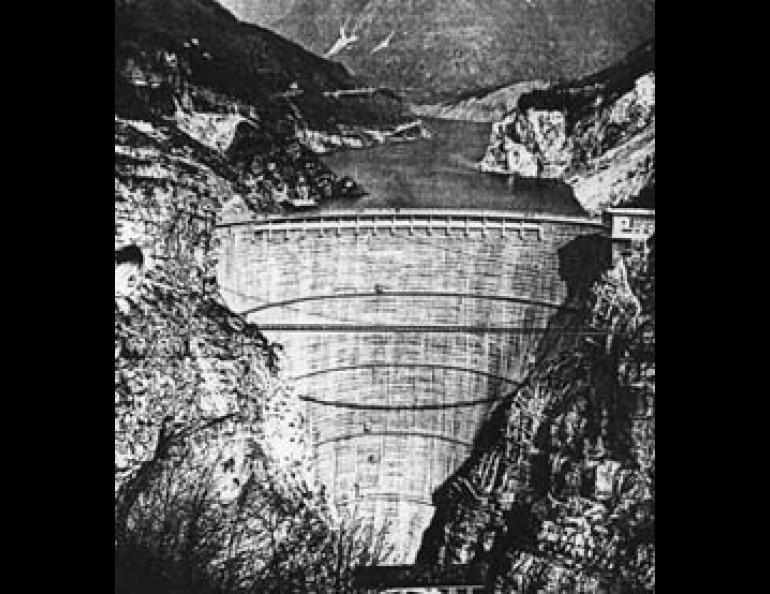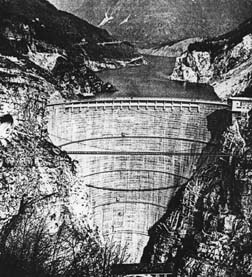
Reservoir Loading and Earthquakes, II
Sometimes nature seems to pack a one-two punch. If southern California has a drought with brush fires, for example, the next rainy spell is likely to bring flooding and mudslides. That's logical, if unpleasant: the vegetation that helped control runoff and stabilize slopes was destroyed by the fires, so the flooding is an understandable consequence.
Flood after fire can be seen as a natural pattern, but what about earthquake after flood? Some longtime Fairbanksans are sure that it happens, and seismologists think they may be right.
In June 1967, Fairbanks residents experienced an earthquake swarm which included at least four events between magnitude 5 and 6 during the first half-hour. During the following weeks, aftershock activity tapered off in typical fashion, and people felt only an occasional small earthquake (although many were being recorded by instruments).
In August of that year, the notorious "thousand-year flood" struck the city, forcing many families to leave their homes and move to higher ground. Packed together in places such as the university campus, people began commenting to each other that there seemed to be an increase in the number of earthquakes they were feeling. In fact, while the flood was cresting, it seemed to many that there must have been a hundred or more perceptible tremors.
Unfortunately, the Geophysical Institute could not check this figure, because the lower-lying local seismograph stations had been wiped out by the flood, and the data telemetry lines extending to the more distant stations in the state had been converted to communications channels for emergency use.
It is probable that there really were more earthquakes during the Fairbanks flood. There have been instances all over the world of earthquakes accompanying impoundment of water in reservoirs. Perhaps the most famous example in the United States is that of Hoover Dam, completed in 1935. Hundreds of earthquakes occurred as the water level rose. Since it reached its peak of 475 feet in 1939, the level of seismicity has fluctuated in direct response to water level. None of the shocks has been particularly damaging--the largest was about magnitude 5--but the area had no record of being seismically active.
Other examples from around the world abound. One of the most widely publicized was that of the Vanont Dam in northeast Italy. From 1960 to 1963, while the reservoir behind the new dam (at 860 feet, the highest in the world) was being filled, some 250 tremors were felt as the water rose. The reservoir and dam are located in a deep, steep-walled canyon. Over a period of time, surveyors had noted a gradual downslope creep of the weak strata composing one of the canyon walls above the reservoir. On the night of October 9, 1963, when the reservoir was completely full, a huge slab of mountainside broke off and plunged into the lake, creating an immense wave which rose 330 feet over the top of the dam and rushed into the valley below. About 2,600 people were drowned. It can be argued that the self-induced earthquakes were not the sole agent responsible for the landslide (there had been a great deal of rain), but they were almost certainly a contributing factor.
Incredibly, the superbly engineered Vajont Dam held; the tragedy would have been much greater had it not. Although there have been many disasters related to dam failure throughout the world, surprisingly few have been directly related to load-induced earthquakes. No dam has actually given way because of quakes, although the dirt-filled Boca Dam in California nearly did so in 1966--a case of faulty engineering.
Because the proposed Susitna hydroelectric project would be situated in an area with a previous history of seismic activity, the earthquake engineering that has gone into its planning is probably unparalleled in history.





